Nutrition Facts
0 servings

Canning cranberry juice at home is a fantastic way to enjoy fresh, preservative-free juice while controlling the level of sweetness. However, using untested methods can lead to unsafe results. This guide will walk you through a tested and reliable method for making and canning cranberry juice safely.
Why You Should Avoid the Unverified Cranberry Juice Recipe
Many canning beginners have come across a popular yet unsafe method of making cranberry juice by simply adding whole cranberries, water, and sugar into a jar before processing them in a canner. This method is not tested for safety due to the air pockets inside cranberries. These pockets may prevent the cranberries from fully breaking open, which means they may not properly release their acidity into the juice. As a result, the acidity level remains unknown, posing a potential risk for unsafe canning.
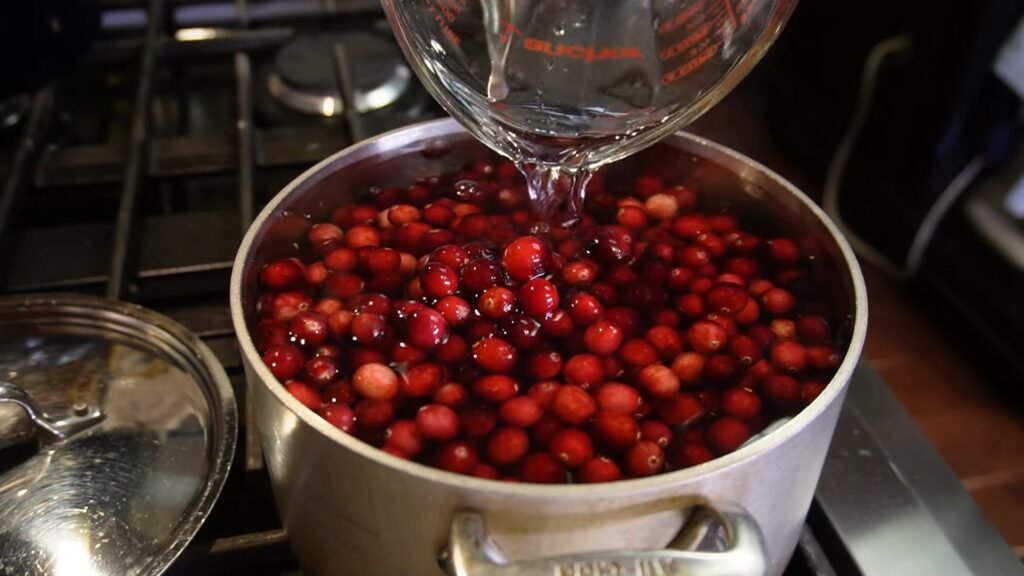
The Safe, Tested Method for Canning Cranberry Juice
The following method, derived from a reliable Canadian canning source, ensures safe acidity levels and a deliciously rich cranberry flavor.
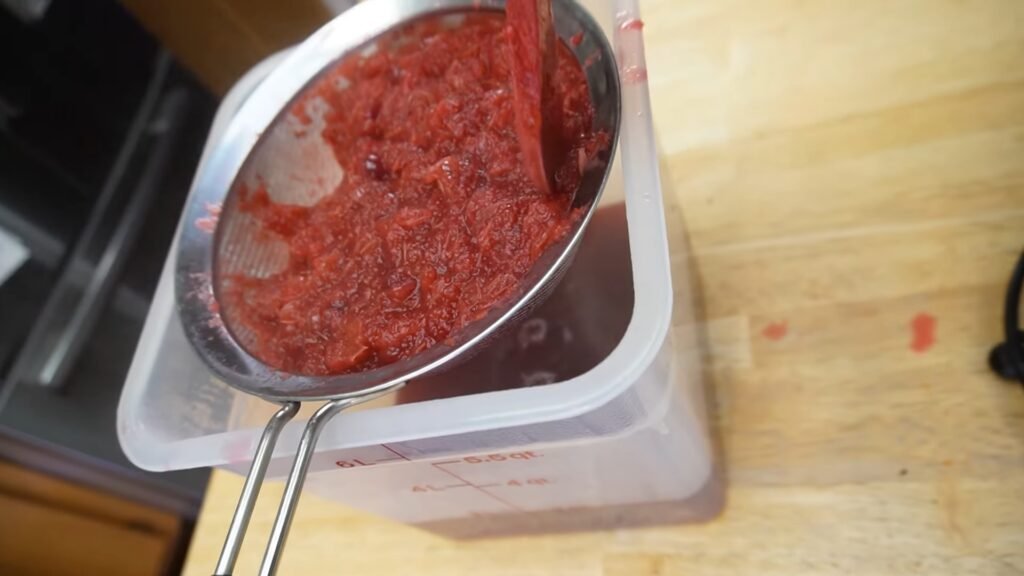
Ingredients:
Equal volumes of fresh or frozen cranberries and water (e.g., 9 cups cranberries to 9 cups water)
Sugar (optional, to taste)
Instructions:
Prepare the Cranberries:
If using frozen cranberries, let them thaw slightly.
Measure out equal volumes of cranberries and water.
Cook the Cranberries:
Add cranberries and water to a large pot.

Bring to a boil and let simmer for at least 5 minutes.
As cranberries begin to pop, stir occasionally to ensure even cooking.
If some cranberries remain unpopped, use a potato masher to gently break them open.
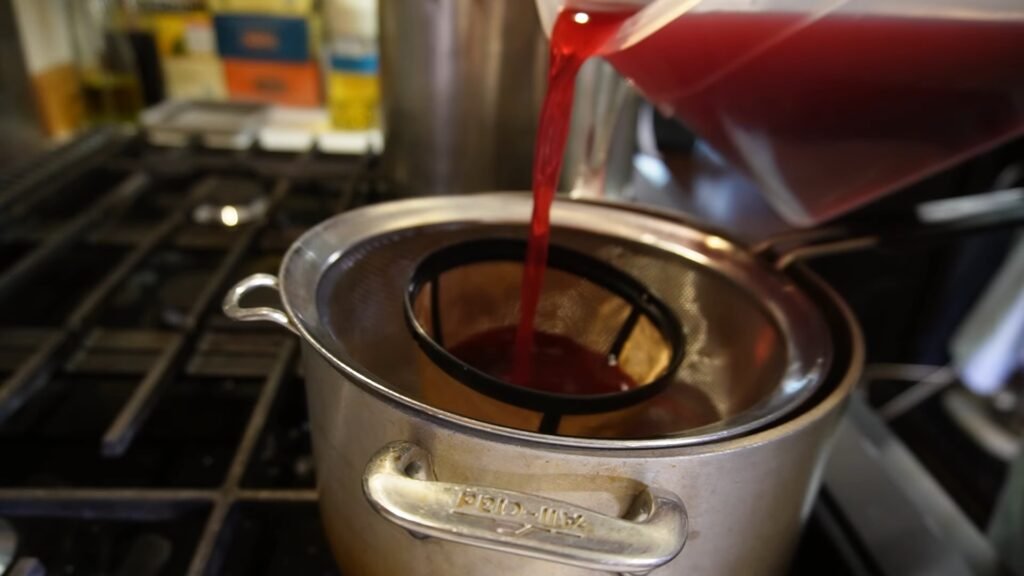
Strain the Juice:
Pour the cranberry mixture through a fine mesh strainer to separate the pulp from the juice.
Stir to help the juice flow through and let it drain for about 20 minutes.
For a finer strain, use a reusable coffee filter or a second fine mesh strainer.
Sweeten the Juice (Optional):
Cranberries are naturally tart. Add sugar or a sugar substitute based on your preference.
A typical cranberry juice contains about 1 ounce (1/8 cup) of sugar per cup of juice. Adjust to taste.
Heat the Juice:
Heat the juice to 190°F for 5 minutes. This step pasteurizes the juice without boiling it.
Remove any foam or residue from the surface.
Fill the Jars:
Pour the hot cranberry juice into sterilized jars, leaving a 1/4-inch headspace.
Wipe jar rims clean, place new lids on, and secure with rings tightened to fingertip tightness.
Process in a Water Bath Canner:
Place jars in a preheated water bath canner, ensuring they are fully submerged with at least 1 inch of water above the lids.
Process for 15 minutes (adjust for altitude if necessary).
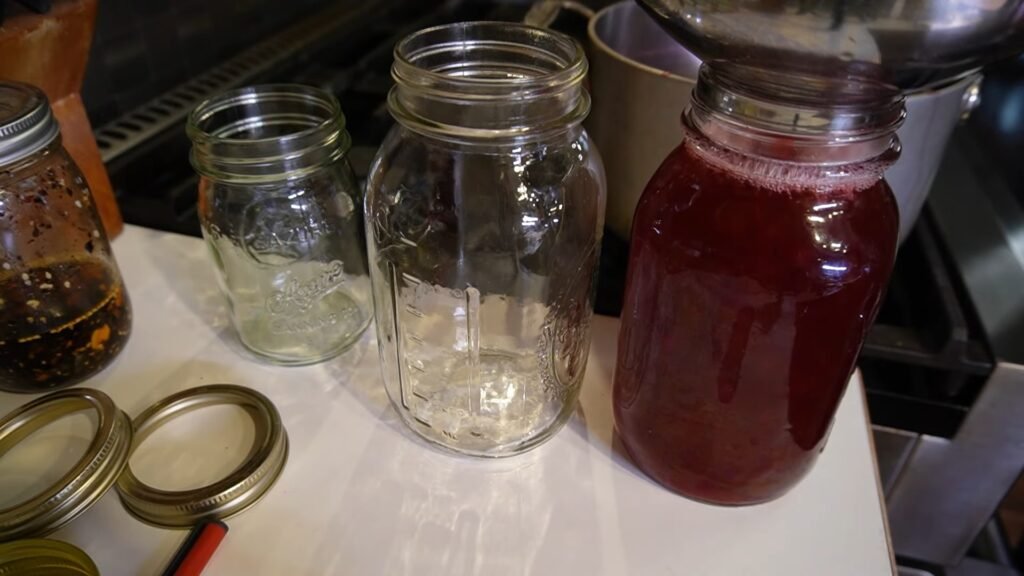
Turn off heat and let jars sit in the canner for 5 minutes before removing.
Cool and Store:
Remove jars carefully and let them cool undisturbed for 12-24 hours.
Check seals and store in a cool, dark place for up to a year.
Bonus: Using the Cranberry Pulp
Don't waste the cranberry pulp! While its acidity is unknown, making it unsafe for canning, it can be repurposed in creative ways:
Mix with sugar, orange juice, and zest to create a cranberry sauce.
Add to muffins, bread, or yogurt for a flavor boost.
Incorporate into a sweet breakfast bread, similar to cinnamon raisin bread.
Conclusion
Making cranberry juice at home is rewarding, but it's essential to follow tested and approved methods to ensure safety. This reliable method allows you to enjoy shelf-stable, flavorful cranberry juice without concerns about spoilage. Try this recipe, and enjoy fresh, homemade cranberry juice all year round!
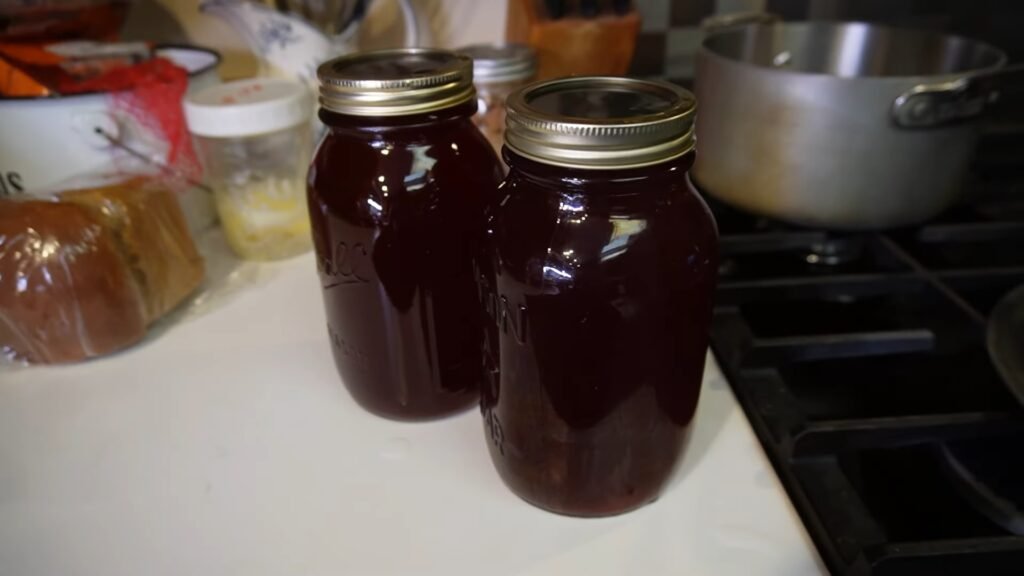
Canning cranberry juice at home is a fantastic way to enjoy fresh, preservative-free juice while controlling the level of sweetness. However, using untested methods can lead to unsafe results. This guide will walk you through a tested and reliable method for making and canning cranberry juice safely.
Why You Should Avoid the Unverified Cranberry Juice Recipe
Many canning beginners have come across a popular yet unsafe method of making cranberry juice by simply adding whole cranberries, water, and sugar into a jar before processing them in a canner. This method is not tested for safety due to the air pockets inside cranberries. These pockets may prevent the cranberries from fully breaking open, which means they may not properly release their acidity into the juice. As a result, the acidity level remains unknown, posing a potential risk for unsafe canning.

The Safe, Tested Method for Canning Cranberry Juice
The following method, derived from a reliable Canadian canning source, ensures safe acidity levels and a deliciously rich cranberry flavor.

Ingredients:
Equal volumes of fresh or frozen cranberries and water (e.g., 9 cups cranberries to 9 cups water)
Sugar (optional, to taste)
Instructions:
Prepare the Cranberries:
If using frozen cranberries, let them thaw slightly.
Measure out equal volumes of cranberries and water.
Cook the Cranberries:
Add cranberries and water to a large pot.

Bring to a boil and let simmer for at least 5 minutes.
As cranberries begin to pop, stir occasionally to ensure even cooking.
If some cranberries remain unpopped, use a potato masher to gently break them open.

Strain the Juice:
Pour the cranberry mixture through a fine mesh strainer to separate the pulp from the juice.
Stir to help the juice flow through and let it drain for about 20 minutes.
For a finer strain, use a reusable coffee filter or a second fine mesh strainer.
Sweeten the Juice (Optional):
Cranberries are naturally tart. Add sugar or a sugar substitute based on your preference.
A typical cranberry juice contains about 1 ounce (1/8 cup) of sugar per cup of juice. Adjust to taste.
Heat the Juice:
Heat the juice to 190°F for 5 minutes. This step pasteurizes the juice without boiling it.
Remove any foam or residue from the surface.
Fill the Jars:
Pour the hot cranberry juice into sterilized jars, leaving a 1/4-inch headspace.
Wipe jar rims clean, place new lids on, and secure with rings tightened to fingertip tightness.
Process in a Water Bath Canner:
Place jars in a preheated water bath canner, ensuring they are fully submerged with at least 1 inch of water above the lids.
Process for 15 minutes (adjust for altitude if necessary).

Turn off heat and let jars sit in the canner for 5 minutes before removing.
Cool and Store:
Remove jars carefully and let them cool undisturbed for 12-24 hours.
Check seals and store in a cool, dark place for up to a year.
Bonus: Using the Cranberry Pulp
Don't waste the cranberry pulp! While its acidity is unknown, making it unsafe for canning, it can be repurposed in creative ways:
Mix with sugar, orange juice, and zest to create a cranberry sauce.
Add to muffins, bread, or yogurt for a flavor boost.
Incorporate into a sweet breakfast bread, similar to cinnamon raisin bread.
Conclusion
Making cranberry juice at home is rewarding, but it's essential to follow tested and approved methods to ensure safety. This reliable method allows you to enjoy shelf-stable, flavorful cranberry juice without concerns about spoilage. Try this recipe, and enjoy fresh, homemade cranberry juice all year round!
